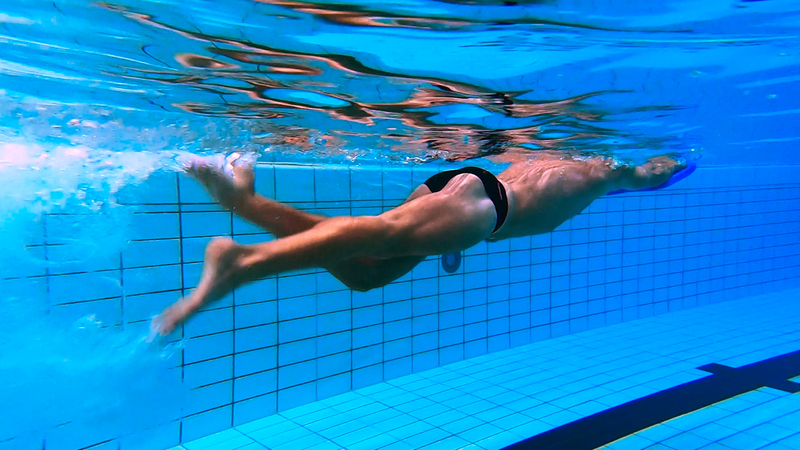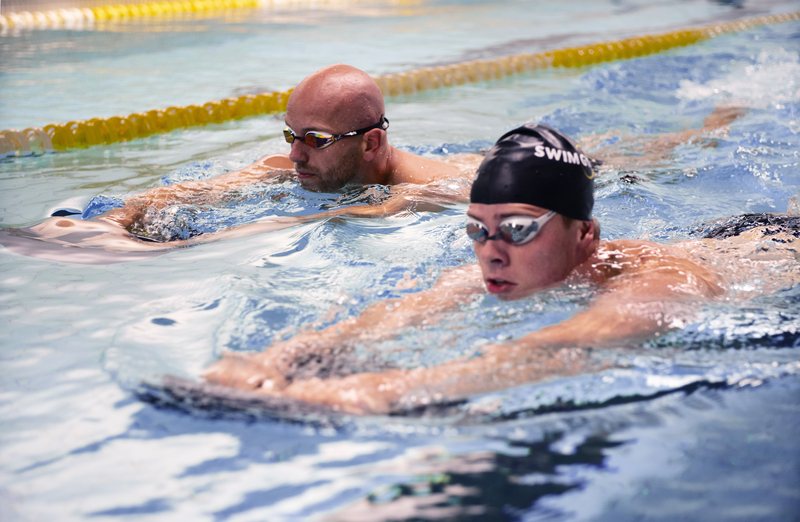Swimming blog - KICK WHY EVERY SWIMMER SHOULD TRAIN THEIR KICK
In freestyle, the (flutter)kick can add up to 10% to your speed when you’re swimming at a hard pace. That is if your kick is efficient and well trained. So why is it important to train your kick on a regular basis if it adds so little to your swimming speed, especially when you’re an endurance swimmer or triathlete? Here’s the answer to that question.
Unless you are a top sprinter in competitive swimming, speed is not the most important function of your kick. Yes, a strong kick comes in handy when you need to speed up to pass another swimmer in the pool or in an open water race. Being able to power up your kick makes it easier to speed up your swimming in general. The kick engages the whole body to deliver more power and therefor speed to your stroke. But for most swimmers and triathletes this should not be the main reason to train your kick and master the technique.
Reasons to kick
The main reason is that a flutter kick creates lift for the legs so your legs will stay high positioned in the water. The higher the legs, the less drag, the faster (or easier) you will swim. The math is pretty simple yet impressive, especially over a longer distance. To be able to keep your feet up high without losing energy is perhaps the biggest gain of training your kick.
If you think a wetsuit will provide the necessary lift? Here’s another reason why you should know how to kick. A well timed kick keeps your stroke balanced and streamlined. The kick counters big upper body movements which prevents the body from ‘snaking’ through the water. Even the slightest kick movement keeps your body in a straight line and your core engaged.

You may see top swimmers glide through the water at an easy pace with seemingly very little kick movement. Sometimes it looks like they are not using the kick at all! But if you would look closely and in slow motion, you’ll find out that the opposite is true.
You will see that even the slightest kick movement is effective and it creates that necessary lift to keep your legs high in the water. You will also see that the instep of the foot flicks down the water, creating that lift. You can tell that the ankle is relaxed to facilitate this flicking motion. That the knee bends just enough to engage and activate the upper leg and hip muscles to create this flicking motion, without causing any drag. That the rhythm of the kick is so well timed and coordinated with the the rhythm of the pull, it takes the least amount of effort to swim efficient and streamlined over long distances.
How to do it?
To achieve this effortless yet effective kicking technique, you need to do one thing and one thing only: train your kick regularly. Because the kick of top swimmers is so well trained, they have developed a kick technique that they can use efficiently with the least amount of effort. The more you train your kick, the more muscle strength you gain and the more ankle flexibility you’ll get.

So grab your kick board and start training your kick step-by-step. When you’re a novice swimmer, use fins to strengthen your muscles first and get a feel for rhythm and posture. Incorporate kick training in your swim routine so it becomes part of a bigger whole. Perform sprints or tempo intervals to strengthen your kick faster. Improve your technique faster by adding kicking drills such as the single leg flutter kick, streamline kick or corkscrew kick. Any well executed drill requires a strong kick, so you can even strengthen your kick while performing drills.
The good news is that if you train your kick on a regular basis, you will notice change and improvement quite fast. It may not feel like that way in the beginning, but if you stick to it religiously, you will master it once and for all. Watch our flutter kick tutorial on top of this blog and the ‘common kicking mistakes’ video to get started.